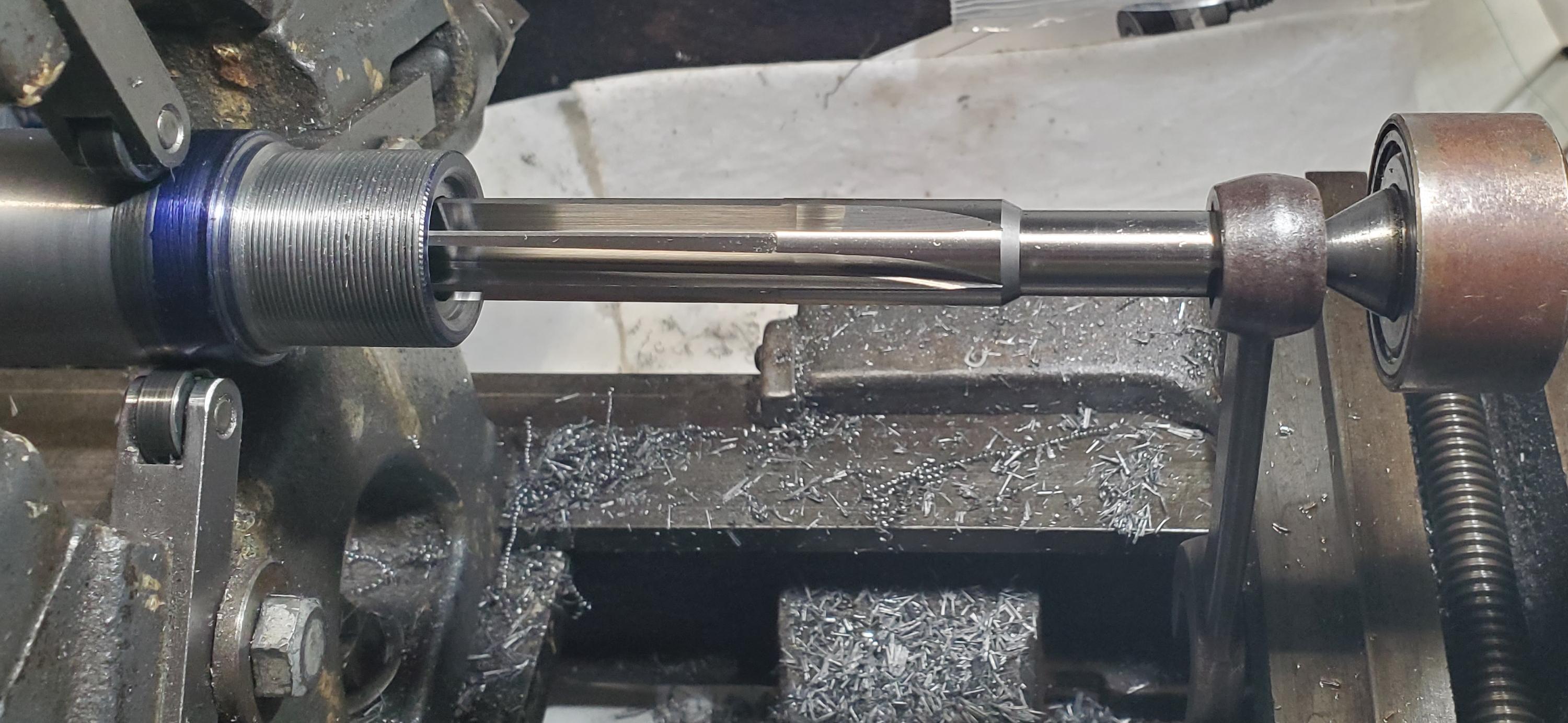- Joined
- Oct 29, 2014
- Messages
- 354
That chatter is nasty!!!. As mentioned I would try to bore out the chatter but without knowing how you set this up it might cause chamber misalignment or not cleanup with the reamer. You can try wrapping the reamer with wax paper and go back at it. You can also take some cotton cleaning patches cut small xx s in them and pack them with grease Put the x cut over the reamer and continue reaming with the cotton and grease packed around the reamer flutes. Play with your speed and feed and try to get in past the chatter I think you need to speed up the spindle some. You can also rub the edges of the reamer flutes with an old copper penny sometimes helps on a new reamer. Is this a 5r barrel? Hows the fit between the reamer bushing and the bore?


